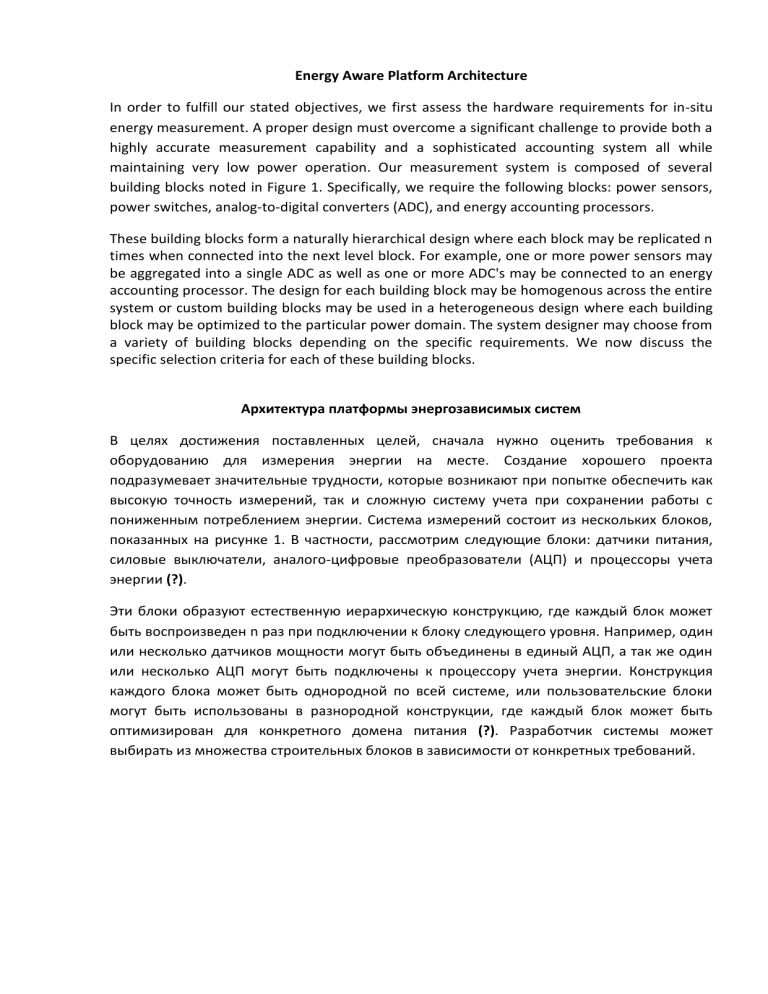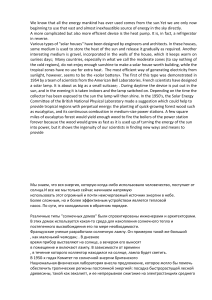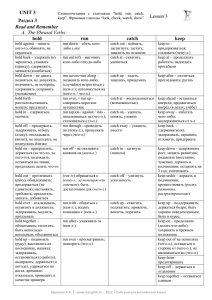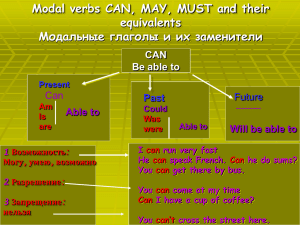
Energy Aware Platform Architecture In order to fulfill our stated objectives, we first assess the hardware requirements for in-situ energy measurement. A proper design must overcome a significant challenge to provide both a highly accurate measurement capability and a sophisticated accounting system all while maintaining very low power operation. Our measurement system is composed of several building blocks noted in Figure 1. Specifically, we require the following blocks: power sensors, power switches, analog-to-digital converters (ADC), and energy accounting processors. These building blocks form a naturally hierarchical design where each block may be replicated n times when connected into the next level block. For example, one or more power sensors may be aggregated into a single ADC as well as one or more ADC's may be connected to an energy accounting processor. The design for each building block may be homogenous across the entire system or custom building blocks may be used in a heterogeneous design where each building block may be optimized to the particular power domain. The system designer may choose from a variety of building blocks depending on the specific requirements. We now discuss the specific selection criteria for each of these building blocks. Архитектура платформы энергозависимых систем В целях достижения поставленных целей, сначала нужно оценить требования к оборудованию для измерения энергии на месте. Создание хорошего проекта подразумевает значительные трудности, которые возникают при попытке обеспечить как высокую точность измерений, так и сложную систему учета при сохранении работы с пониженным потреблением энергии. Система измерений состоит из нескольких блоков, показанных на рисунке 1. В частности, рассмотрим следующие блоки: датчики питания, силовые выключатели, аналого-цифровые преобразователи (АЦП) и процессоры учета энергии (?). Эти блоки образуют естественную иерархическую конструкцию, где каждый блок может быть воспроизведен n раз при подключении к блоку следующего уровня. Например, один или несколько датчиков мощности могут быть объединены в единый АЦП, а так же один или несколько АЦП могут быть подключены к процессору учета энергии. Конструкция каждого блока может быть однородной по всей системе, или пользовательские блоки могут быть использованы в разнородной конструкции, где каждый блок может быть оптимизирован для конкретного домена питания (?). Разработчик системы может выбирать из множества строительных блоков в зависимости от конкретных требований. ENERGY-AWARE DEVELOPMENT TOOLS We now provide three examples of user applications showing the value of this energy registry. Each application is a tool providing energy profiling information to the developer from different energy usage perspectives. The first, etop collects and displays aggregated energy dissipation of platform applications and power domains and is valuable for comparing energy dissipation between applications. The second example, endoscope provides application energy tracing at higher time resolution, to locate high energy dissipation at critical sections within an application. The third example improves the aforementioned endoscope by enhancing the Linux Trace Toolkit [Ope12b] to provide energy dissipation information in graphical form in addition to existing kernel and application execution trace information. Etop is a user-space tool that enables rapid observation of energy consumption, when running an arbitrary set of processes. Using etop, an application developer can easily visualize, in real-time, the power draw of subsystems and energy consumption of running processes. Due to its rapid real-time information display, it can also be used as a runtime debugging tool, for quickly ascertaining system and process energy performance, as well as for understanding the energy behavior of processes in a dynamic environment. Etop is based on the well-known UNIX program top. Etop adds two additional capabilities: persubsystem current, power and energy information and per-process energy accounting. Figure 3.30 presents a screenshot of etop, with the top section displaying per-subsystem information and the bottom section displaying per-process energy consumption. Endoscope, unlike etop, measures energy consumption of entire subsystems rather than those associated with individual processes. As a result, when conducting our experiments, care is taken to ensure that endoscope measures energy solely attributed to a single application. For this development of endoscope, this procedure is effective for ENS systems that typically support one dominant application, or a set of applications that can be considered dominant. Table 3.12 summarizes the capabilities and differences of these software tools. LTT While endoscope provides real-time energy tracing data, it was soon discovered that the data generated during applications profiling can become a significant and may interfere with the testing application. We discovered a open source tracing and visualization application which solved many of the fundamental limitations of endoscope while providing a modular software architecture to enable a broad energy-aware development capability to both kernel and user-space applications. The Linux Trace Toolkit (LTT) is used to record software execution traces into a kernel buffer that is optimized for low overhead data transfer to the user-space recording applications. Средства разработки энергозависимых систем. Далее представлены три примера пользовательских приложений, каждое из которых является инструментом предоставления информации разработчику с разных точек зрения использования энергии. Первый, ETOP, собирает и показывает суммарное рассеивание энергии платформенных приложений и силовых доменов. Он ценен для сравнения распределения энергии между приложениями. Второй пример, эндоскоп, обеспечивает отслеживание энергии в более высоком временном разрешении, чтобы найти высокую степень рассеивания энергии в критических секциях приложений. Третий пример улучшает вышеупомянутый эндоскоп путем совершенствования Linux Trace Toolkit, чтобы предоставлять информацию о рассеивании энергии в графической форме в дополнение к существующей информации о трассировке ядра и приложений. Software/Firmware Power Management PC power management refers to the mechanism for controlling the power use of personal computer hardware. This is typically through the use of software that puts the hardware into the lowest power demand state available. It is an aspect of Green computing. Current power management solutions for general purpose platforms suffer from one or more of the following issues: a requirement for the host CPU to be active, a large memory footprint that is difficult to run on memory constrained systems, use of overly simplified models of device power requirements, or are single point solutions that are not adaptive to dynamic environments. The predominant power management standard in general purpose computing today is the Advanced Configuration and Power Interface (ACPI). ACPI relies upon a dedicated register set, BIOS, and platform description table in order to provide device level power management status and control information. It is widely used in general purpose computing equipment as well as many other systems based on the Intel x86 architecture. This power management architecture has proven to be versatile and scalable as it is supported by the majority of hardware vendors and desktop operating systems today. While ACPI defines the hardware’s power management capabilities, it relies upon a separate component within the operating system, the operating system directed power management (OSPM) layer, to the device power state most appropriate at a particular instant. Microsoft’s OnNow design initiative acknowledges the necessity to enable individual, device level power management changes in power-aware computing systems. OnNow seeks to build on top of ACPI enabled systems by extending power management capabilities into device driver and operating system software as well as recommending minimum hardware power management capabilities. It serves as a framework for ACPI power management information to be sent to power-aware applications and for power management directives to be propagated to platform hardware components. OnNow defines a limited set of global power management states, which are controlled directly by the operating system. The platform enters low power sleep states with any application required wake up ca pabilities enabled. This provides a means for individual applications to customize system sleep states depending on current requirements and provides application driven device wakeup capabilities. Software Driven Solutions The top-down approach to power management is typically a software defined solution requiring only limited augmentation to existing commercial hardware (for energy monitoring purposes) and utilizes one or both of the following features: device energy models for power prediction; external test equipment (such as digital multimeters or oscilloscopes) to perform offline platform power profiling. The top-down approach can be organized into categories including: device level power management algorithms, power-aware memory management, energy-aware operating system design, application assisted power management, and system level energy profiling. Interface Devices Data interfaces are often dictated by the system into which a device will be connected— automotive applications may have a CAN, LIN, FlexRay, or MOST interface; computers, USB or Ethernet; other embedded devices may communicate by I2C, UART, SPI, or a host of other protocols. The environment dictates the architecture; the power requirement is a secondary consideration. But this needn’t always be the case. Protocols that continually poll other devices on the bus will draw far more power than those that wait for a signal or event. USB 2.0, for example, continually polls every device on the network to see if any one of them wants to send data; a USB 3.0 controller, on the other hand, waits for a device to raise an “attention needed” flag before waking up and acknowledging the request; other devices on the bus remain in a quiescent state while the host and device complete their transaction. USB 3.0 also implements link power management, which further reduces power consumption. While a slower interface will consume less power than a faster one, that doesn’t necessarily translate to less energy. Polling aside, there will be cases where it works best for an MCU or peripheral to wake up from a power down mode; put out a quick burst of data, and go back to sleep. Would the power profile look better if you dropped the data rate, which would reduce power consumption, but took longer to transfer the data? It depends on the application. While there are no truly ultra-low-power interfaces, look for buses that enable multiple idle states at different power levels. Scaling back the bus clock clearly saves power, but asynchronous buses like USB 3.0 are better still.









